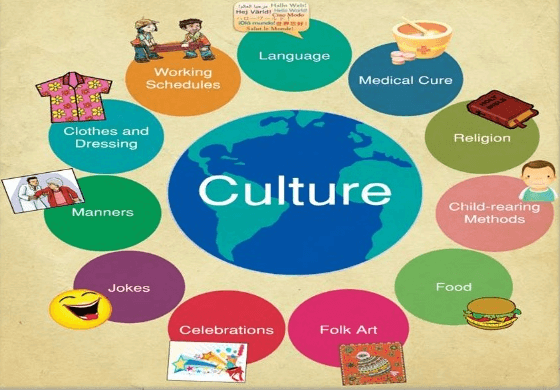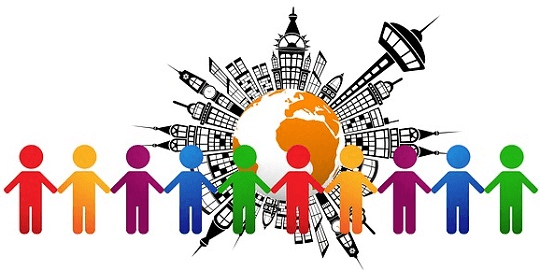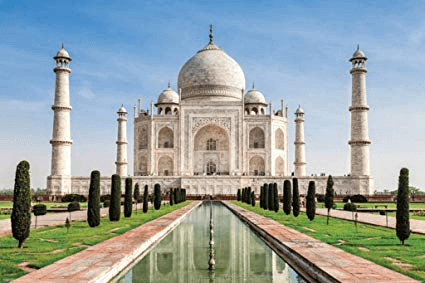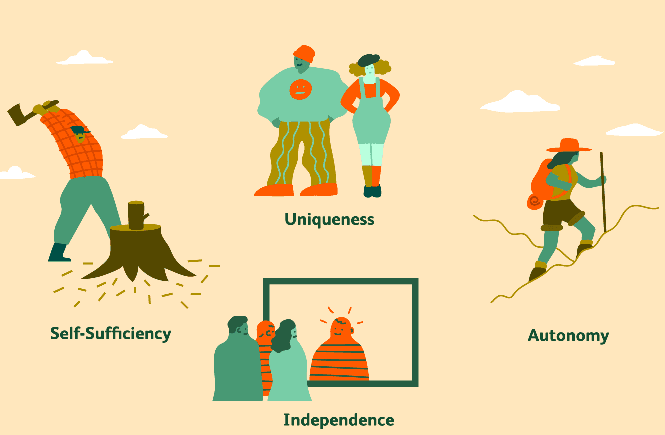Chapter 1 - Culture : An Introduction - Notes, UPSC/ IAS Exam | Art, Architecture and Literature by Shahid Ali PDF Download
INTRODUCTION
The English word ‘Culture’ is derived from the Latin term ‘cult or cultus’ meaning tilling, or cultivating or refining and worship. In sum it means cultivating and refining a thing to such an extent that its end product evokes our admiration and respect.

This is practically the same as ‘Sanskriti’ of the Sanskrit language.
The term ‘Sanskriti’ has been derived from the root ‘ Kri (to do) of Sanskrit language. Three words came from this root ‘ Kri; prakriti ’ (basic matter or condition), ‘Sanskriti’ (refined matter or condition) and ‘vikriti’ (modified or decayed matter or condition) when ‘prakriti’ or a raw material is refined it becomes ‘Sanskriti’ and when broken or damaged it becomes ‘vikriti’.
OBJECTIVES
After studying this lesson you will be able to:
- understand the concept and meaning of culture;
- establish the relationship between culture and civilization;
- Establish the link between culture and heritage;
- discuss the role and impact of culture in human life.
1.1 CONCEPT OF CULTURE
(i) Culture is a way of life. The food you eat, the clothes you wear, the language you speak in and the God you worship all are aspects of culture. In very simple terms, we can say that culture is the embodiment of the way in which we think and do things. It is also the things that we have inherited as members of society.  Concept of culture and cultural diversity
Concept of culture and cultural diversity
(ii) All the achievements of human beings as members of social groups can be called culture. Art, music, literature, architecture, sculpture, philosophy, religion and science can be seen as aspects of culture. However, culture also includes the customs, traditions, festivals, ways of living and one’s outlook on various issues of life.
(iii) Culture thus refers to a human-made environment which includes all the material and non-material products of group life that are transmitted from one generation to the next. There is a general agreement among social scientists that culture consists of explicit and implicit patterns of behavior acquired by human beings.
(iv) These may be transmitted through symbols, constituting the distinctive achievements of human groups, including their embodiment as artifacts. The essential core of culture thus lies in those finer ideas which are transmitted within a group-both historically derived as well as selected with their attached value.
(v) More recently, culture denotes historically transmitted patterns of meanings embodied in symbols, by means of which people communicate, perpetuate and develop their knowledge about and express their attitudes toward life.
(vi) Culture is the expression of our nature in our modes of living and thinking. It may be seen in our literature, in religious practices, in recreation and enjoyment. Culture has two distinctive components, namely, material and non-material.
(vii) Material culture consists of objects that are related to the material aspect of our life such as our dress, food, and household goods. Non-material culture refers to ideas, ideals, thoughts, and beliefs.
(viii) Culture varies from place to place and country to country. Its development is based on the historical process operating in a local, regional or national context.
For example, we differ in our ways of greeting others, our clothing, food habits, social and religious customs and practices from the West. In other words, the people of any country are characterised by their distinctive cultural traditions.
Intext Questions
Q.1. How can you say that Culture and Sanskriti carry the same meaning?
Ans. Culture’s literal meaning is to do and Sanskriti also literally means refining and cultivating.
Q.2. Fill in the blanks:
(a) All the achievements of human beings and groups can be called................
Ans. Culture
(b) Culture has two distinctive components viz. material and................
Ans. Non-material
1.2 CULTURE AND CIVILIZATION
(i) The word ‘culture’ and ‘civilization’ are often used synonymously. However, they have clearly defined meanings differentiating them. ‘Civilization’ means having better ways of living and sometimes making nature bend to fulfill their needs.  Culture is different from civilization
Culture is different from civilization
(ii) It also includes organizing societies into politically well-defined groups working collectively for improved conditions of life in matters of food, dress, communication, and so on. Thus some groups consider themselves as civilized and look down upon others. This disposition of certain groups has even led to wars and holocausts, resulting in mass destruction of human beings.
(iii) On the other hand ‘culture’ refers to the inner being, a refinement of head and heart. This includes arts and sciences, music and dance and various higher pursuits of human life which are also classified as cultural activities.
(iv) One who may be poor and wearing cheap clothes may be considered ‘uncivilized’, but still he or she may be the most cultured person. One possessing ostentatious wealth may be considered as ‘civilized’ but he may not be cultured.
(v) Therefore, when we think of culture, we have to understand that it is different from civilization. As we have seen, culture is the ‘higher levels of inner refinement’ of a human being. Humans are not merely physical beings. They live and act at three levels: physical, mental and spiritual.
(vi) While better ways of living socially and politically and better utilization of nature around us may be termed as civilization. This is not enough to be cultured. Only when the deeper levels of a person’s intellect and consciousness are brought into expression can we call him/her ‘cultured’.
Intext Questions
Q.1. What is the difference between culture and civilization?
Ans. Culture is what we are and civilization is what we posses or we make use of.
Q.2. Give two similarities of culture and civilization.
Ans. Changes in both culture and civilization occur. Civilization is advanced state of culture.
1.3 CULTURE AND HERITAGE
(i) Cultural development is a historical process. Our ancestors learnt many things from their predecessors. With the passage of time they also added to it from their own experience and gave up those which they did not consider useful. We in turn have learnt many things from our ancestors.
(ii) As time goes we continue to add new thoughts, new ideas to those already existent and sometimes we give up some which we don’t consider useful any more. This is how culture is transmitted and carried forward from generation to next generation.
(iii) The culture we inherit from our predecessors is called our cultural heritage. This heritage exists at various levels. Humanity as a whole has inherited a culture which may be called human heritage. A nation also inherits a culture which may be termed as national cultural heritage. Taj Mahal is example of Mughal heritage and culture
Taj Mahal is example of Mughal heritage and culture
(iv) Cultural heritage includes all those aspects or values of culture transmitted to human beings by their ancestors from generation to generation. They are cherished, protected and maintained by them with unbroken continuity and they feel proud of it.
(v) A few examples would be helpful in clarifying the concept of heritage. The Taj Mahal, Swami Narayan Temple of Gandhinagar and Delhi, Red Fort of Agra, Delhi’s Qutub Minar, Mysore Palace, Jain Temple of Dilwara (Rajasthan) Nizamuddin Aulia’s Dargah, Golden Temple of Amritsar, Gurudwara Sisganj of Delhi, Sanchi Stupa, Christian Church in Goa, India Gate etc., are all important places of our heritage and are to be protected by all means.
(vi) Besides the architectural creations, monuments, material artifacts, the intellectual achievements, philosophy, treasures of knowledge, scientific inventions and discoveries are also the part of heritage.
(vii) In Indian context the contributions of Baudhayan, Aryabhatta, Bhaskaracharya in the field of Mathematics, Astronomy and Astrology; Kanad and Varahmihir in the field of Physics; Nagarjuna in the field of Chemistry, Susruta and Charak in the field of Medicines and Patanjali in the field of Yoga are profound treasures of Indian Cultural heritage.
(viii) Culture is liable to change, but our heritage does not.
(ix) We individuals, belonging to a culture or a particular group, may acquire or borrow certain cultural traits of other communities/cultures, but our belongingness to Indian cultural heritage will remain unchanged.
(x) Our Indian cultural heritage will bind us together e.g. Indian literature and scriptures namely Vedas, Upanishads Gita and Yoga System etc. have contributed a lot by way of providing right knowledge, right action, behavior and practices as complementary to the development of civilization.
Intext Questions
Q.1. What is cultural heritage?
Ans. Culture that we inherit from our ancestors is called our cultural heritage.
Q.2. Give some examples of cultural heritage.
Ans. Taj Mahal, Red Fort of agra, Vedas, Upnishads and Gita (Architectural monuments, Treasures of knowledge, Scientific and intellectual achievements)
1.4 GENERAL CHARACTERISTICS OF CULTURE
Now let us discuss some general characteristics, which are common to different cultures throughout the world.
1. Culture is learned and acquired: Culture is acquired in the sense that there are certain behavior which are acquired through heredity. Individuals inherit certain qualities from their parents but socio-cultural patterns are not inherited.
These are learnt from family members, from the group and the society in which they live. It is thus apparent that the culture of human beings is influenced by the physical and social environment through which they operate.
2. Culture is shared by a group of people: A thought or action may be called culture if it is shared and believed or practiced by a group of people.
3. Culture is cumulative: Different knowledge embodied in culture can be passed from one generation to another generation. More and more knowledge is added in the particular culture as the time passes by. Each may work out solution to problems in life that passes from one generation to another. This cycle remains as the particular culture goes with time.
4. Culture changes: There is knowledge, thoughts or traditions that are lost as new cultural traits are added. There are possibilities of cultural changes within the particular culture as time passes.
5. Culture is dynamic: No culture remains on the permanent state. Culture is changing constantly as new ideas and new techniques are added as time passes modifying or changing the old ways. This is the characteristics of culture that stems from the culture’s cumulative quality.
6. Culture gives us a range of permissible behavior patterns: It involves how an activity should be conducted, how an individual should act appropriately.
7. Culture is diverse: It is a system that has several mutually interdependent parts. Although these parts are separate, they are interdependent with one another forming culture as whole.
8. Culture is ideational: Often it lays down an ideal pattern of behavior that are expected to be followed by individuals so as to gain social acceptance from the people with the same culture.
Intext Questions
Q.1. What is meant by permissible behavior patterns?
Ans. Culture forms an ideal pattern of behavior that is expected to be followed by individuals.
Q.2. How can you say that culture is dynamic?
Ans. Culture is changing constantly. New ideas and new techniques are added from time to time.
1.5 IMPORTANCE OF CULTURE IN HUMAN LIFE
(i) Culture is closely linked with life. It is not an add-on, an ornament that we as human beings can use. It is not merely a touch of colour. It is what makes us human. Without culture, there would be no humans. Culture is made up of traditions, beliefs, way of life, from the most spiritual to the most material. It gives us meaning, a way of leading our lives. Human beings are creators of culture and, at the same time, culture is what makes us human.
(ii) A fundamental element of culture is the issue of religious belief and its symbolic expression. We must value religious identity and be aware of current efforts to make progress in terms of interfaith dialogue, which is actually an intercultural dialogue.
(iii) As the world is becoming more and more global and we coexist on a more global level we can’t just think there’s only one right way of living or that any one is valid. The need for coexistence makes the coexistence of cultures and beliefs necessary.  Culture and human behavior
Culture and human behavior
(iv) In order to not make such mistakes, the best thing we can do is get to know other cultures, while also getting to know our own. How can we dialogue with other cultures, if we don’t really know what our own culture is?
(v) The three eternal and universal values of Truth, Beauty and Goodness are closely linked with culture. It is culture that brings us closer to truth through philosophy and religion; it brings beauty in our lives through the Arts and makes us aesthetic beings; and it is culture that makes us ethical beings by bringing us closer to other human beings and teaching us the values of love, tolerance and peace.
Intext Questions
Q.1. What does culture provide for a decent life?
Ans. Culture provides us with ideas, ideals and values to lead a decent life.
Q.2. Which individual would be called uncultured in society?
Ans. One who does not have self restraint in thought in feelings and in action, may be called an uncultured individual.
WHAT YOU HAVE LEARNT
- Culture has been derived from Latin term ‘Cult’ or ‘Cultus’ meaning tilling or refining.
- ‘Sanskriti’ is derived from Sanskrit root ‘Kri’ meaning to do.
- Culture may be defined as the way an individual and especially a group live, think, feel and organize themselves, celebrate and share life.
- Culture has different characteristics. It can be acquired, lost or shared. It is cumulative. It is dynamic, diverse and gives us a range of permissible behavior-pattern. It can change. Culture includes both material and non-material components.
- In deeper sense it is culture that produces the kind of literature, music, dance, sculpture, architecture and various other art forms as well as the many organizations and structures that make the functioning of the society smooth and well-ordered.
- Culture provides us with ideas, ideals and values to lead a decent life.
- Self restraint in conduct, consideration for the feelings of others, for the rights of others, are the highest marks of culture.
- A cultural heritage means all the aspects or values of culture transmitted to human beings by their ancestors to the next generation.
- Architectural creations, monuments, material artifacts, the intellectual achievements, philosophy, pleasure of knowledge, scientific inventions and discoveries are parts of heritage.
TERMINAL QUESTIONS
1. How will you define the concept of culture?
2. How is culture and civilization synonymous?
3. What is cultural heritage?
4. What are the general characteristics of culture?
|
23 docs|2 tests
|
FAQs on Chapter 1 - Culture : An Introduction - Notes, UPSC/ IAS Exam - Art, Architecture and Literature by Shahid Ali
| 1. What is the meaning of culture? |  |
| 2. How does culture impact society? |  |
| 3. What are some examples of cultural artifacts? |  |
| 4. How does globalization affect culture? |  |
| 5. What is the significance of studying culture for UPSC/IAS exam? |  |






















